Posté par Deborah Laks, le 8 février 2016;
- Date et lieu de la rencontre : 16 février 2016, Paris, Maison Heinrich Heine
![primary_perceval1-thumb-500x380-16599[1]](http://blog.apahau.org/wp-content/uploads/2016/02/primary_perceval1-thumb-500x380-165991-300x228.jpg) Dans le cadre de son thème annuel intitulé « Le Moyen Age et son image », le DFK Paris programme un cycle de ciné-débats dans la salle de projection de la maison Heinrich Heine. Chacun des trois films sera présenté par un chercheur du centre, bénéficiaire d’une bourse dans le cadre du thème annuel. Nous voudrions ainsi offrir au public le regard d’un ou d’une historien.ne de l’art spécialiste du Moyen Age, sur des grands films situant leur action durant cette période. Dans le cadre de son thème annuel intitulé « Le Moyen Age et son image », le DFK Paris programme un cycle de ciné-débats dans la salle de projection de la maison Heinrich Heine. Chacun des trois films sera présenté par un chercheur du centre, bénéficiaire d’une bourse dans le cadre du thème annuel. Nous voudrions ainsi offrir au public le regard d’un ou d’une historien.ne de l’art spécialiste du Moyen Age, sur des grands films situant leur action durant cette période.
Le débat portera principalement sur la question de la représentation, figurée et imaginée, du Moyen Age à l’époque contemporaine et des symboliques qui s’y trouvent mises . . . → En lire plus
Posté par Sébastien Bontemps, le 8 février 2016;
- Date limite : 30 mars 2016
- Date et lieu : 2-9 septembre 2016, University of York
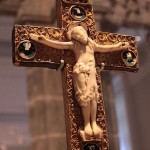 The Rood in Medieval Britain and Ireland c.900 – c.1500 (York, 2-9 Sep 16) University of York UK, September 2 – 03, 2016 Deadline: Mar 30, 2016 Keynote Speaker: Professor Richard Marks (University of Cambridge and University of York) The rood – understood as the cross itself, and/or the image of Christ crucified – was central to the visual and devotional culture of medieval Christianity. By the late middle ages, a rood was present in monumental form, either painted or sculpted, at the east end of the nave of every church. Yet roods in numerous other forms could be found in ecclesiastical contexts: as images, in various sizes and media – in manuscript illumination, on textiles, and in stained glass. Images . . . → En lire plus The Rood in Medieval Britain and Ireland c.900 – c.1500 (York, 2-9 Sep 16) University of York UK, September 2 – 03, 2016 Deadline: Mar 30, 2016 Keynote Speaker: Professor Richard Marks (University of Cambridge and University of York) The rood – understood as the cross itself, and/or the image of Christ crucified – was central to the visual and devotional culture of medieval Christianity. By the late middle ages, a rood was present in monumental form, either painted or sculpted, at the east end of the nave of every church. Yet roods in numerous other forms could be found in ecclesiastical contexts: as images, in various sizes and media – in manuscript illumination, on textiles, and in stained glass. Images . . . → En lire plus
Posté par ckikuchi, le 2 février 2016;
- Dates et lieux des séances de séminaire : 20 mai et 10 juin, 18-20h, Maison de la Recherche
- Date limite : 15 mars 2016
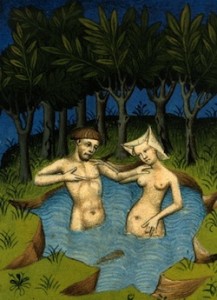 Eve en entraînant Adam dans le péché originel lui fait prendre conscience de sa nudité, et donc de sa sexualité. Ce sentiment de culpabilité se rencontre dans les trois religions du Livre, et aboutit à une série de règles, allant de la prohibition de l’adultère à celle de certaines positions sexuelles. Nous souhaitons approfondir les relations entre les sexualités et les interdits qu’elles ont entraînés. Ceux-ci seront vus surtout sous l’angle du pouvoir religieux et du pouvoir politique qui s’en est emparé. Qui dit interdit, dit aussi stratégies de contournement : il s’agira aussi de déconstruire l’image d’un Moyen Âge réprimant la sexualité, pour laisser . . . → En lire plus Eve en entraînant Adam dans le péché originel lui fait prendre conscience de sa nudité, et donc de sa sexualité. Ce sentiment de culpabilité se rencontre dans les trois religions du Livre, et aboutit à une série de règles, allant de la prohibition de l’adultère à celle de certaines positions sexuelles. Nous souhaitons approfondir les relations entre les sexualités et les interdits qu’elles ont entraînés. Ceux-ci seront vus surtout sous l’angle du pouvoir religieux et du pouvoir politique qui s’en est emparé. Qui dit interdit, dit aussi stratégies de contournement : il s’agira aussi de déconstruire l’image d’un Moyen Âge réprimant la sexualité, pour laisser . . . → En lire plus
Posté par direction études et recherche INHA, le 18 janvier 2016;
- Date et lieu de la journée d'études : 30 janvier 2016, Paris, INHA
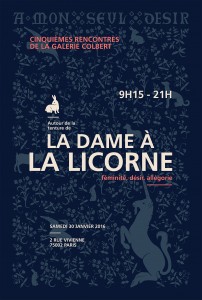 Les cinquièmes rencontres de la Galerie Colbert sont organisées par l’INHA, en partenariat avec le musée de Cluny, musée national du Moyen Âge (www.musee-moyenage.fr) et toutes les institutions présentes dans la galerie (universités, centres de recherche, Inp). Les cinquièmes rencontres de la Galerie Colbert sont organisées par l’INHA, en partenariat avec le musée de Cluny, musée national du Moyen Âge (www.musee-moyenage.fr) et toutes les institutions présentes dans la galerie (universités, centres de recherche, Inp).
Pour cette cinquième édition, la galerie Colbert ouvre à nouveau ses portes au grand public. Lieu historique conservant la mémoire du XIXe siècle et de ses fameux « passages », elle héberge depuis 2001 la plupart des établissements d’enseignement et de recherche d’Île-de-France en histoire de l’art, ainsi que l’Institut national du patrimoine, permettant de renforcer la communauté scientifique de . . . → En lire plus
Posté par Matthieu Lett, le 14 janvier 2016;
- Date et lieu de la journée d'études : 7 avril 2016, CESCM, Salle Crozet (24, rue de de la Chaîne, 86000 Poitiers)
- Date limite : 5 février 2016
 Janua, association des étudiants en Masters et doctorants de l’Université de Poitiers, des spécialités antique et médiévale rattachés respectivement aux laboratoires HeRMA et CESCM, organise le 7 avril prochain une journée d’étude consacrée aux jeunes chercheurs (étudiants en Master Recherche, doctorants, docteurs ayant soutenu depuis moins de trois ans). À cette occasion, ces derniers, spécialisés dans l’étude des civilisations antique et médiévale, auront l’opportunité de présenter leurs travaux. Pour ce faire, ils devront s’attacher à respecter la thématique de l’édition 2016, étant d’aspect interdisciplinaire et méthodologique pour laisser place au dialogue. Le thème choisi est celui des instruments de pouvoir. Janua, association des étudiants en Masters et doctorants de l’Université de Poitiers, des spécialités antique et médiévale rattachés respectivement aux laboratoires HeRMA et CESCM, organise le 7 avril prochain une journée d’étude consacrée aux jeunes chercheurs (étudiants en Master Recherche, doctorants, docteurs ayant soutenu depuis moins de trois ans). À cette occasion, ces derniers, spécialisés dans l’étude des civilisations antique et médiévale, auront l’opportunité de présenter leurs travaux. Pour ce faire, ils devront s’attacher à respecter la thématique de l’édition 2016, étant d’aspect interdisciplinaire et méthodologique pour laisser place au dialogue. Le thème choisi est celui des instruments de pouvoir.
Le pouvoir. On le définira tantôt par les . . . → En lire plus
Posté par Sébastien Bontemps, le 12 janvier 2016;
- Date limite : 1er mars 2016
- Date et lieu : 3-5 novembre, Université de Rennes
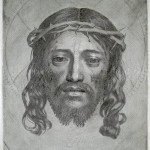 L`image miraculeuse dans le monde chrétien (Rennes, 3-5 Nov 16) Université Rennes 2, Rennes, France, November 3 – 05, 2016 Consacré aux images miraculeuses et à leur culte dans le christianisme occidental (XIVe-XVIIe siècles), le colloque a pour but d’envisager tous les aspects d’un phénomène majeur, qui a eu des répercussions dans la plupart des domaines de la vie religieuse, depuis la réflexion théologique jusqu’aux pratiques des pèlerins en passant par les dévotions privées ou encore l’aménagement des lieux de culte. En conjuguant questionnements et perspectives disciplinaires variés, la rencontre entend à la fois faire le bilan des recherches menées dans ce domaine et contribuer à leur renouvellement. Le colloque se tiendra à l’Université Rennes 2 les 3-4-5 novembre 2016. . . . → En lire plus L`image miraculeuse dans le monde chrétien (Rennes, 3-5 Nov 16) Université Rennes 2, Rennes, France, November 3 – 05, 2016 Consacré aux images miraculeuses et à leur culte dans le christianisme occidental (XIVe-XVIIe siècles), le colloque a pour but d’envisager tous les aspects d’un phénomène majeur, qui a eu des répercussions dans la plupart des domaines de la vie religieuse, depuis la réflexion théologique jusqu’aux pratiques des pèlerins en passant par les dévotions privées ou encore l’aménagement des lieux de culte. En conjuguant questionnements et perspectives disciplinaires variés, la rencontre entend à la fois faire le bilan des recherches menées dans ce domaine et contribuer à leur renouvellement. Le colloque se tiendra à l’Université Rennes 2 les 3-4-5 novembre 2016. . . . → En lire plus
Posté par Denis Dubois, le 19 décembre 2015;
- Date limite : 28 février 2016
- Date de parution : Juin 2016
 Le Bucema 20.1 publié en ligne sur la plateforme Revues.org est en préparation. Nous vous invitons à soumettre, dès maintenant et avant le 28 février 2016, votre contribution pour ses différentes rubriques en vue de la publication du numéro varia n° 20.1, à paraître en juin 2016. Pour exemple, le numéro 19.1 est consultable à l’adresse http://cem.revues.org/13760 Le Bucema 20.1 publié en ligne sur la plateforme Revues.org est en préparation. Nous vous invitons à soumettre, dès maintenant et avant le 28 février 2016, votre contribution pour ses différentes rubriques en vue de la publication du numéro varia n° 20.1, à paraître en juin 2016. Pour exemple, le numéro 19.1 est consultable à l’adresse http://cem.revues.org/13760
Fidèle à son principe de diffusion de la recherche en train de se faire et librement accessible, le Bucema continue à mettre l’accent sur l’interdisciplinarité ‐ sciences humaines et sociales, sciences de la nature et mathématiques ‐, comme le meilleur moyen d’inventer une nouvelle médiévistique. Il est . . . → En lire plus
Posté par Sébastien Bontemps, le 15 décembre 2015;
- Date et lieu : 5 séances du 18 février au 16 juin, Paris, INHA
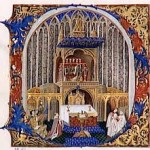 Cycle de conferences: Byzance et Moyen Age occidental Cycle de conferences: Byzance et Moyen Age occidental
Institut National d’Histoire de l’Art, salle Vasari, 2 rue Vivienne, 75002 Paris, February 18, 2016, February 18 – June 16, 2016
Cycle de conférences Visibilité et présence de l’image dans l’espace ecclésial. Byzance et Moyen Age occidental Les jeudis 18 février, 24 mars, 19 mai et 16 juin 2016 INHA, salle Vasari (salle Jullian le 16 juin 2016) 2, rue Vivienne 75002 Paris En quatre demi-journées, des spécialistes de l’Orient byzantin et de l’Occident latin dialogueront autour de thématiques qui prolongeront la réflexion menée lors de la journée d’étude introductive du 25 septembre 2015. Ce cycle s’inscrit dans le programme de recherche IMAGO-EIK?N. Regards croisés sur l’image médiévale entre Orient et . . . → En lire plus
Posté par Olivier Bonfait, le 14 décembre 2015;
- Date limite : 31 décembre 2015, 31 décembre 2015
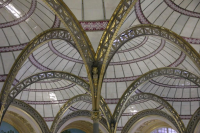 L’Institut national d’histoire de l’art a publié deux appels à candidatures pour des postes de pensionnaire (niveau de recrutement : post-doc ou conservateur du patrimoine Etat) : – Pensionnaire pour le programme « Ontologie du christianisme médiéval en images » Pour plus de renseignements : http://www.inha.fr/fr/recherche/le-departement-des-etudes-et-de-la-recherche/appels-a-candidatures/pensionnaire-ontologie.html – Pensionnaire pour le programme « Nouveau dictionnaire raisonné d’architecture française » Pour plus de renseignements : http://www.inha.fr/fr/recherche/le-departement-des-etudes-et-de-la-recherche/appels-a-candidatures/pensionnaire-architecture.html Date limite de candidature : 31 décembre 2015 L’Institut national d’histoire de l’art a publié deux appels à candidatures pour des postes de pensionnaire (niveau de recrutement : post-doc ou conservateur du patrimoine Etat) : – Pensionnaire pour le programme « Ontologie du christianisme médiéval en images » Pour plus de renseignements : http://www.inha.fr/fr/recherche/le-departement-des-etudes-et-de-la-recherche/appels-a-candidatures/pensionnaire-ontologie.html – Pensionnaire pour le programme « Nouveau dictionnaire raisonné d’architecture française » Pour plus de renseignements : http://www.inha.fr/fr/recherche/le-departement-des-etudes-et-de-la-recherche/appels-a-candidatures/pensionnaire-architecture.html Date limite de candidature : 31 décembre 2015
Posté par Riba Bertrand, le 10 décembre 2015;
- Date et lieu du colloque : 17-19 décembre 2015, Paris, INHA
 Le contexte géopolitique régional, qui impose une rupture des processus traditionnels de la recherche, conduit aujourd’hui à établir un bilan de l’activité scientifique menée ces dernières années. Ce sera l’occasion de porter un nouveau regard sur la question de la persistance partielle du paganisme, puis sur l’apparition et les modalités de l’implantation du christianisme dans la région grâce à l’analyse de la répartition spatiale des monuments, de leur architecture et des témoignages épigraphiques. Le contexte géopolitique régional, qui impose une rupture des processus traditionnels de la recherche, conduit aujourd’hui à établir un bilan de l’activité scientifique menée ces dernières années. Ce sera l’occasion de porter un nouveau regard sur la question de la persistance partielle du paganisme, puis sur l’apparition et les modalités de l’implantation du christianisme dans la région grâce à l’analyse de la répartition spatiale des monuments, de leur architecture et des témoignages épigraphiques.
Au cours de ce colloque seront présentés des sites antiques majeurs qui ont bénéficié d’une exploration archéologique récente et qui fournissent de nouveaux résultats. La question des monuments emblématiques de la christianisation sera également soulevée . . . → En lire plus
Posté par Denis Dubois, le 7 décembre 2015;
- Date limite : 15 février 2016
- Date de remise des textes : 1er décembre 2016
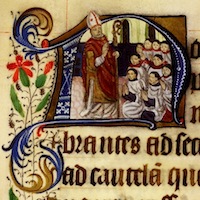 La co-présence massive du texte et de l’image dans les arts et les lettres du Moyen Âge n’est plus à démontrer. Des manuscrits aux vitraux, des édifices aux objets du quotidien, des reliquaires aux documents administratifs et juridiques, les interactions et la complémentarité de l’iconographie et du texte ont fait l’objet, au xxe siècle, d’une interrogation constante, d’abord hésitante puis de plus en plus systématisée, en même temps que des champs épistémologiques neufs se sont affirmés. La co-présence massive du texte et de l’image dans les arts et les lettres du Moyen Âge n’est plus à démontrer. Des manuscrits aux vitraux, des édifices aux objets du quotidien, des reliquaires aux documents administratifs et juridiques, les interactions et la complémentarité de l’iconographie et du texte ont fait l’objet, au xxe siècle, d’une interrogation constante, d’abord hésitante puis de plus en plus systématisée, en même temps que des champs épistémologiques neufs se sont affirmés.
Ces trente dernières années, le devant de la scène a été largement occupé en France par les études des historiens, dans une orientation résolument anthropologique. Analyse sérielle, prise en compte des contextes textuels, spatiaux, sociaux, . . . → En lire plus
Posté par Olivier Bonfait, le 5 décembre 2015;
- Date limite : 18 décembre 2015, 18 décembre 2015
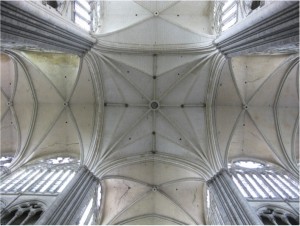 L’unité de recherche TrAme de l’Université de Picardie – Jules Verne (EA 4284, https://www.u-picardie.fr/unites-de-recherche/trame/presentation/) cherche à recruter un titulaire d’un doctorat en histoire de l’art médiéval spécialiste d’architecture gothique, pour participer pendant un an à un projet financé par la région Picardie intitulé TRANSEPT. Ce projet sur trois ans (2015-2018) réunit des historiens de l’art et des informaticiens en vue de l’étude du transept de la cathédrale d’Amiens sous l’angle de l’archéologie monumentale et des sciences du numérique appliquées aux objets complexes. L’unité de recherche TrAme de l’Université de Picardie – Jules Verne (EA 4284, https://www.u-picardie.fr/unites-de-recherche/trame/presentation/) cherche à recruter un titulaire d’un doctorat en histoire de l’art médiéval spécialiste d’architecture gothique, pour participer pendant un an à un projet financé par la région Picardie intitulé TRANSEPT. Ce projet sur trois ans (2015-2018) réunit des historiens de l’art et des informaticiens en vue de l’étude du transept de la cathédrale d’Amiens sous l’angle de l’archéologie monumentale et des sciences du numérique appliquées aux objets complexes.
Offre d’emploi Contrat post-doctoral Université de Picardie – Jules Verne (Amiens) Durée du contrat : 1 an (1er février 2016-31 janvier 2017) Financement : Région . . . → En lire plus
Posté par Sarah Feron, le 1 décembre 2015;
- Date et lieu de la journée d'étude : 10 décembre 2015 - 10h - Hôtel Fumé - Salle des Actes
8, rue René Descartes, 86000 Poitiers
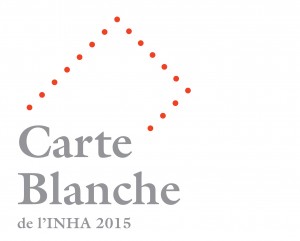 La référence à l’Antiquité classique est continue au cours des périodes modernes et contemporaines, et l’on n’a pas fini d’explorer les résurgences, les citations, les emprunts plus ou moins conscients, plus ou moins explicites, voire les manipulations auxquels se livrent les artistes à cet égard. D’autres antiquités, d’autres passés, éloignés dans le temps comme dans l’espace, sont aussi interrogés et explorés – le Moyen-Age offre une source tantôt rejetée tantôt fascinante. Et chaque époque entretient avec celle qui la précède une relation complexe de filiation et d’opposition. L’éclectisme et les néo-styles rebondissent de siècle en siècle, souvent accusés, mais peut-être à tort de freiner les avant-gardes. La référence à l’Antiquité classique est continue au cours des périodes modernes et contemporaines, et l’on n’a pas fini d’explorer les résurgences, les citations, les emprunts plus ou moins conscients, plus ou moins explicites, voire les manipulations auxquels se livrent les artistes à cet égard. D’autres antiquités, d’autres passés, éloignés dans le temps comme dans l’espace, sont aussi interrogés et explorés – le Moyen-Age offre une source tantôt rejetée tantôt fascinante. Et chaque époque entretient avec celle qui la précède une relation complexe de filiation et d’opposition. L’éclectisme et les néo-styles rebondissent de siècle en siècle, souvent accusés, mais peut-être à tort de freiner les avant-gardes.
La . . . → En lire plus
Posté par Pascale Dubus, le 30 novembre 2015;
- Date et lieu du colloque : 18-19 mai 2016, Raanana, Israel,The Open University of Israel
- Date limite : 31 décembre 2015
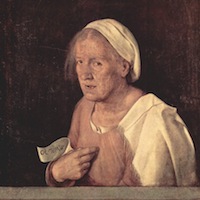 The subject of time was frequently encountered in medieval and early modern thinking and culture, from the notion of eternity as an abiding “now” outside of time (as defined by Gregory of Nazianzos, in Oratio 39.12, “Christ, the Maker of time . . . is not subject to time”) to the aphorism Tempus vitam regit (“Time rules life”) engraved on more than one sundial. Ranging from the discussion of the reception of Aristotelian and Neoplatonic concepts of time and temporality (Pasquale Porro, The Medieval Concept of Time) to the analysis of temporality and anachronism in art (Elizabeth Sears, The Ages of Man: Medieval Interpretations of the Life Cycle; . . . → En lire plus The subject of time was frequently encountered in medieval and early modern thinking and culture, from the notion of eternity as an abiding “now” outside of time (as defined by Gregory of Nazianzos, in Oratio 39.12, “Christ, the Maker of time . . . is not subject to time”) to the aphorism Tempus vitam regit (“Time rules life”) engraved on more than one sundial. Ranging from the discussion of the reception of Aristotelian and Neoplatonic concepts of time and temporality (Pasquale Porro, The Medieval Concept of Time) to the analysis of temporality and anachronism in art (Elizabeth Sears, The Ages of Man: Medieval Interpretations of the Life Cycle; . . . → En lire plus
Posté par Denis Dubois, le 29 novembre 2015;
- Date limite : 4 Janvier 2016
- Date et lieu du colloque : 19-20 février 2016, Durham, Duke University
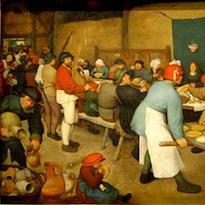 The 16th Annual North Carolina Colloquium in Medieval and Early Modern Studies invites graduate students to submit proposals for twenty-minute paper presentations that investigate representations of everyday life––mimetic, descriptive, or prescriptive––from late antiquity through early modernity. How are the particularities of ordinary experience shown, shaped, distorted, or elided in poetry, prose, visual art, architecture, music, drama, and other forms of creative endeavor? For that matter, what constitutes the concept of the ordinary, and how does the history of this concept interweave with the development of realism, alongside other modes of representation? The 16th Annual North Carolina Colloquium in Medieval and Early Modern Studies invites graduate students to submit proposals for twenty-minute paper presentations that investigate representations of everyday life––mimetic, descriptive, or prescriptive––from late antiquity through early modernity. How are the particularities of ordinary experience shown, shaped, distorted, or elided in poetry, prose, visual art, architecture, music, drama, and other forms of creative endeavor? For that matter, what constitutes the concept of the ordinary, and how does the history of this concept interweave with the development of realism, alongside other modes of representation?
In short, we shall explore what is at stake in representing the ordinary. For whether the representation . . . → En lire plus
Posté par Elsa Guyot, le 28 novembre 2015;
- Date et lieu : 12 décembre 2015, Montpellier, Université Paul-Valéry
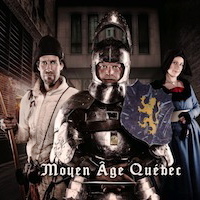 Soutenance publique de thèse de Doctorat en Histoire de l’art d’Elsa Guyot Soutenance publique de thèse de Doctorat en Histoire de l’art d’Elsa Guyot
« Les représentations du Moyen Âge au Québec à travers les discours muséaux (1944-2014) » Sous la direction de Géraldine Mallet et de Christine Bernier
Le 12 décembre 2015 à 14h à la Salle des Actes du site universitaire Saint-Charles, Université Paul-Valéry, Rue du Professeur Henri Serre, 34080 Montpellier (tramway : Place Albert 1er)
Composition du jury :
Christine Bernier, Professeure d’histoire de l’art à l’Université de Montréal Sarah Guérin, Professeure d’histoire de l’art à l’Université de Montréal Dominic Hardy, Professeur d’histoire de l’art à l’Université du Québec à Montréal Géraldine Mallet, Professeur d’histoire de l’art médiéval à . . . → En lire plus
Posté par Denis Dubois, le 21 novembre 2015;
- Date limite : 15 decembre 2015
- Date et lieux des journées d'étude : 16-18 March 2016, Münster (Allemagne),
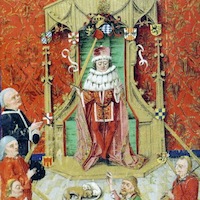 Cet atelier a pour objectif de proposer une première vue d’ensemble de ces programmes héraldiques des salles d’apparat au cours du Moyen âge et de l’Époque moderne en Europe et d’en proposer une première typologie. Dans ce but, nous voudrions intégrer à notre étude des salles d’apparat d’une grande diversité sociale et institutionnelle. Sous salles d’apparat nous entendons, dans ce contexte, des salles qui étaient utilisées pour des cérémonies et qui servaient surtout comme espace identitaire privilégié où étaient accueillis aussi bien les membres de la propre communauté, que ceux qui venaient de l’extérieur. Cet atelier a pour objectif de proposer une première vue d’ensemble de ces programmes héraldiques des salles d’apparat au cours du Moyen âge et de l’Époque moderne en Europe et d’en proposer une première typologie. Dans ce but, nous voudrions intégrer à notre étude des salles d’apparat d’une grande diversité sociale et institutionnelle. Sous salles d’apparat nous entendons, dans ce contexte, des salles qui étaient utilisées pour des cérémonies et qui servaient surtout comme espace identitaire privilégié où étaient accueillis aussi bien les membres de la propre communauté, que ceux qui venaient de l’extérieur.
Exécutés sur différents supports — peinture, vitrail, faïence, sculpture, tapisserie et tentures, mobilier, et parfois même . . . → En lire plus
Posté par Deborah Laks, le 17 novembre 2015;
- Date limite : 20 novembre 2015
- Date et lieu de la rencontre : 3-5 juin 2016, Fontainebleau, Chateau
 Dans le cadre de son thème annuel, « le Moyen Age et son image », le Centre allemand d’histoire de l’art souhaite présenter au Festival d’Histoire de l’art de Fontainebleau un panel consacré à la manière dont le rire trouve, au Moyen Age, à corroborer un ordre, ou à le contredire. Dans le cadre de son thème annuel, « le Moyen Age et son image », le Centre allemand d’histoire de l’art souhaite présenter au Festival d’Histoire de l’art de Fontainebleau un panel consacré à la manière dont le rire trouve, au Moyen Age, à corroborer un ordre, ou à le contredire.
Le rire inscrit le culturel et le social dans le corporel. Topos de la scholastique, motif des artistes, il donne à entrevoir un ordre non seulement moral, mais aussi politique et esthétique. Toutefois, le rire est duel, et suivant la partition de l’hébreu et du grec, il peut être à la fois positif et négatif, joyeux ou dénigrant, force . . . → En lire plus
Posté par Sébastien Bontemps, le 11 novembre 2015;
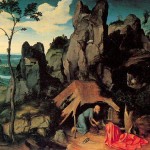 Spaces, Places and Times of Solitude (Bern, 9-11 Dec 2015) University of Bern, December 9 – 11, 2015 A Three-Day International and Interdisciplinary Conference University of Bern, 9–11 December 2015 Hallerstrasse 6, Room 205 Organized by Christine Göttler, University of Bern, in collaboration with Karl A. E. Enenkel, Westfälische Wilhelms-Universität, Münster This conference asks about the construction, imagination and representation of the space of solitude in art, architecture, literature, church history and theology throughout the late medieval and early modern periods. It addresses, among other themes, the construction of ‘sacred solitude’ by various monastic orders; the literary and visual imagination of coenobitic or communal solitude; and the role of interiority and solitude in reform movements. Are there liturgical time periods . . . → En lire plus Spaces, Places and Times of Solitude (Bern, 9-11 Dec 2015) University of Bern, December 9 – 11, 2015 A Three-Day International and Interdisciplinary Conference University of Bern, 9–11 December 2015 Hallerstrasse 6, Room 205 Organized by Christine Göttler, University of Bern, in collaboration with Karl A. E. Enenkel, Westfälische Wilhelms-Universität, Münster This conference asks about the construction, imagination and representation of the space of solitude in art, architecture, literature, church history and theology throughout the late medieval and early modern periods. It addresses, among other themes, the construction of ‘sacred solitude’ by various monastic orders; the literary and visual imagination of coenobitic or communal solitude; and the role of interiority and solitude in reform movements. Are there liturgical time periods . . . → En lire plus
Posté par Pascale Dubus, le 10 novembre 2015;
- Date limite : 15 décembre 2015
- Date de prise de fonction : Juillet 2016
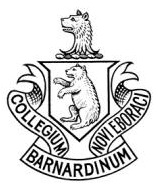 Barnard College Department of Art History, Assistant Professor, tenure-track, medieval art, 400-1400. A concentration on Europe and/or on areas active in and interactive with the medieval Mediterranean or the medieval Indian Ocean are preferred. A PhD in Art History must be completed by the time of the appointment (July 1, 2016). Barnard College Department of Art History, Assistant Professor, tenure-track, medieval art, 400-1400. A concentration on Europe and/or on areas active in and interactive with the medieval Mediterranean or the medieval Indian Ocean are preferred. A PhD in Art History must be completed by the time of the appointment (July 1, 2016).
Applications must be filed online at . . . → En lire plus
|
Équipe Rédacteur en chef : Olivier Bonfait.
Rédacteurs : Elliot Adam (Moyen Age) ; Nicolas Ballet (XX-XXIe siècles) ; Matthieu Fantoni (musées) ; Antonella Fenech Kroke (bourses) ; Vladimir Nestorov (Lettre mensuelle)
Administrateur web : Matthieu Lett.
ancien éditeur : Pascale Dubus
anciens rédacteurs : Gautier Anceau, Sébastien Bontemps, Damien Bril ; Sébastien Chauffour ; Ludovic Jouvet ; Aude Prigot
|
![primary_perceval1-thumb-500x380-16599[1]](http://blog.apahau.org/wp-content/uploads/2016/02/primary_perceval1-thumb-500x380-165991-300x228.jpg) Dans le cadre de son thème annuel intitulé « Le Moyen Age et son image », le DFK Paris programme un cycle de ciné-débats dans la salle de projection de la maison Heinrich Heine. Chacun des trois films sera présenté par un chercheur du centre, bénéficiaire d’une bourse dans le cadre du thème annuel. Nous voudrions ainsi offrir au public le regard d’un ou d’une historien.ne de l’art spécialiste du Moyen Age, sur des grands films situant leur action durant cette période.
Dans le cadre de son thème annuel intitulé « Le Moyen Age et son image », le DFK Paris programme un cycle de ciné-débats dans la salle de projection de la maison Heinrich Heine. Chacun des trois films sera présenté par un chercheur du centre, bénéficiaire d’une bourse dans le cadre du thème annuel. Nous voudrions ainsi offrir au public le regard d’un ou d’une historien.ne de l’art spécialiste du Moyen Age, sur des grands films situant leur action durant cette période.


















